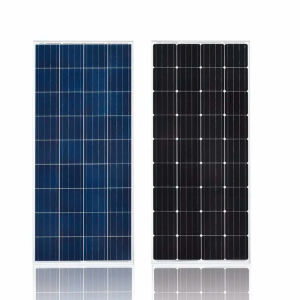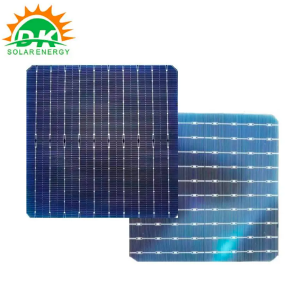Solar panels are growing in popularity as a sustainable and renewable energy source, revolutionizing the way we harness electricity. They play a vital role in reducing carbon emissions and reducing dependence on fossil fuels. However, as technology has improved, various types of solar panels have emerged, each with its own unique properties and applications. In this blog, we will explore the four main categories of solar panels: monocrystalline, polycrystalline, BIPV and flexible, explaining their differences and advantages.
1. Monochrome panel:
Monocrystalline panels, short for monocrystalline silicon panels, are considered to be one of the most efficient and widely used types of solar panels on the market. They are constructed from a single high-quality silicon crystal, which means higher conversion rates. Monocrystalline panels tend to have higher efficiencies (around 20%) compared to other types. This means they can generate more electricity in a limited space. They are also known for their excellent performance in low light conditions, making them ideal for areas with inconsistent sunlight.
2. Polyboard:
Polycrystalline panels, or polycrystalline panels, are another popular choice for homeowners and businesses. Unlike monocrystalline panels, they are composed of multiple silicon crystals, giving them their distinctive blue appearance. Although polycrystalline panels are slightly less efficient than monocrystalline panels (around 15-17%), they are more cost-effective to produce, making them an attractive option for those on a budget. Polyethylene sheets also perform well in hot climates because they are less affected by the heat.
3. BIPV panel:
Building-integrated photovoltaic (BIPV) panels are witnessing tremendous growth due to their innovative design and versatility. These panels are not only used to generate electricity, but are also integrated into the structure of the building. BIPV panels can be seamlessly integrated into windows, roofs or facades as structural and energy-saving elements. They blend aesthetic appeal with function, making them an excellent choice for architects, builders and designers looking to enhance the sustainable character of their buildings.
4. Flexible panel:
Flexible panels, also known as membrane panels, are gaining popularity due to their unique properties and ability to adapt to unconventional surfaces. Unlike rigid monocrystalline and polycrystalline panels, flexible panels are made of lightweight, flexible materials such as amorphous silicon and cadmium telluride. This flexibility allows them to be mounted on curved surfaces, portable devices, or even integrated into fabrics. Despite its relatively low efficiency (around 10-12%), its flexibility and versatility make it a practical choice for professional applications and portable solar solutions.
In summary:
Solar panels have come a long way since their inception, evolving to meet every need and preference. Single-panel offers high efficiency and reliable performance, while multi-panel offers a cost-effective alternative. BIPV panels are seamlessly integrated into architectural designs, turning buildings into power generators. Finally, flexible panels are breaking the boundaries of traditional solar panel installations, adapting to curved surfaces and portable devices. Ultimately, the choice of these solar panel types depends on factors such as budget, available space, aesthetic requirements, and specific application. With further advances in technology, solar panels will continue to improve, leading us to a greener and more sustainable future.
Post time: Jul-28-2023


